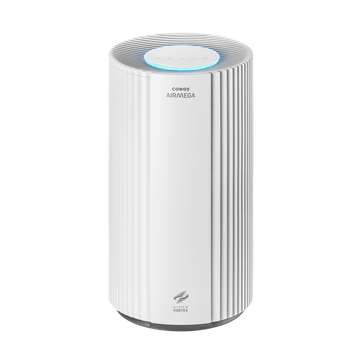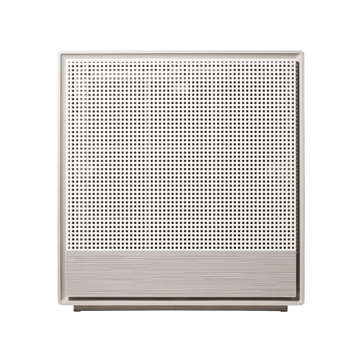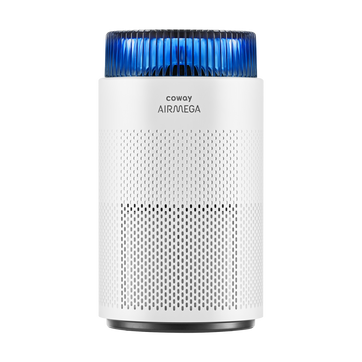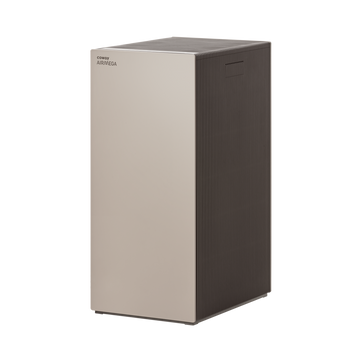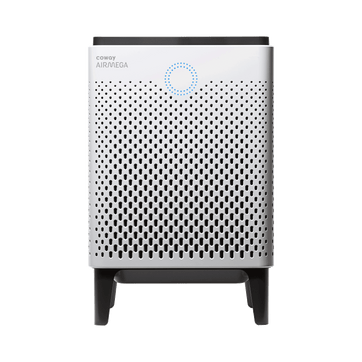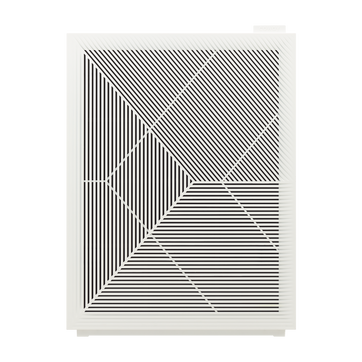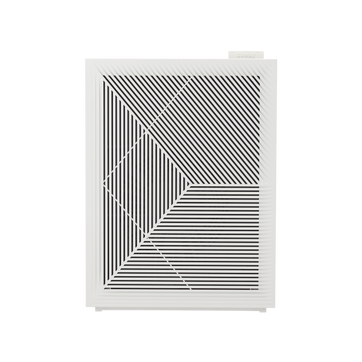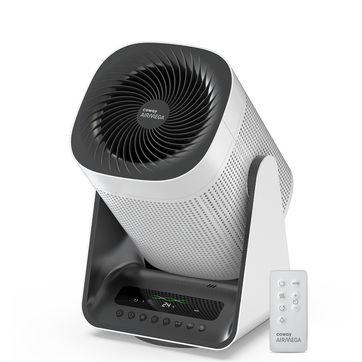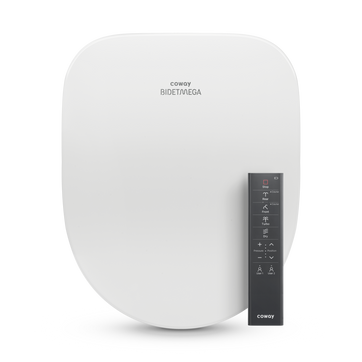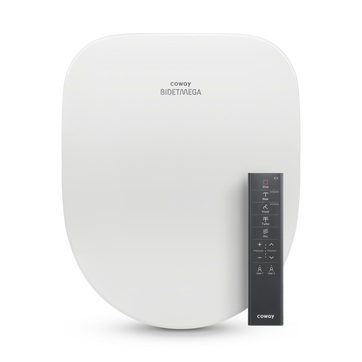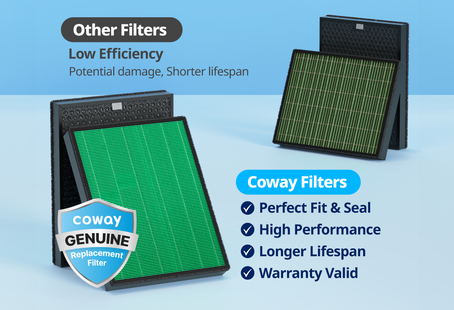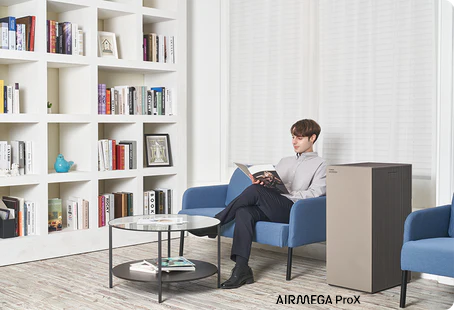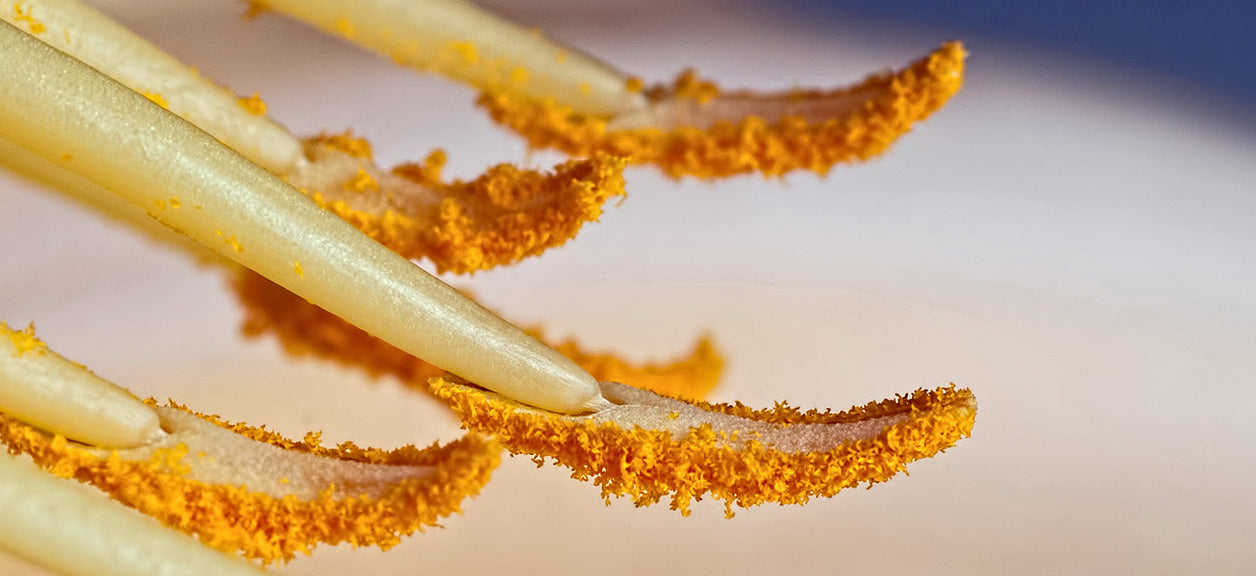
Allergen of the month: flower pollen
Our next installment of our Allergen of the Month series is all about flower pollen.
In April, the arrival of spring flowers is an annual source of joy for most of us. But for people who suffer from allergies triggered by pollen, the season is a mixed blessing. Of course, plants with flowers need pollination to form new seeds that will, in turn, grow into new plants. But pollen can also cause allergic reactions, or pollinosis, especially when it’s spread by the wind.
Fast facts
• The more hybridized the flower—the result of growing plants from a seed created by two different plant varieties—the less likely it will have a high pollen level.
• Mountain laurels have a series of 10 arms, or filaments, that act like catapults, flinging pollen into the air at up to 8 miles per hour.
• Two breeds of sunflowers, apricot twist and joker, are hypoallergenic, because their pollen is too heavy to be carried by wind.
• Asters, dahlias and daisies are among the worst flowers for allergy-sufferers.
• The beloved rose, the world’s most popular flower, is also one of the most allergy-friendly.
Where to find them
While you can come across allergy-causing flowers in a great many places, some areas as worse than others. Dahlias, for example, thrive in the Northwest and especially in coastal areas. Chamomile grows freely in sunny, well-drained areas. And the speedy mountain laurels? They’re native to the eastern U.S.
How to treat them
• Take antihistamines, which are effective at treating mild cases of pollen allergies. Or try decongestants. Always talk to your doctor before starting any new medications.
• Talk to your doctor about allergy immunotherapy (AIT) treatment, which involves administering doses of allergens to accustom the body to pollen, thereby inducing specific long-term tolerance.
• Stay inside, if you can, on high-pollen days and days that are windy.
• Keep flowers out of the house. When they’re brought indoors, they can be even more irritating.
• To keep the presence of pollen to a minimum at home, use a smart air purifier with a HEPA filter, like Airmega.
Disclaimers
1Coway air purifiers has been proven to trap dust, pollen, dander, viruses and bacteria in the air based on KCL (Korea Conformity Laboratories) testing.They have been tested in a 30㎥ size chamber according to the Korea Air Cleaning Association standard (SPS-KACA 002-132:2022 Modified) to measure the 0.01㎛ size of particle removal rate. It was tested on maximum airflow speed in normal room temperature and humidity conditions. The performance may vary in the actual living environment of customers.
→ Tested with Airmega Aim, 150, 160, AP-1216L, AP-1512HH, AP-1512HHS, 200M, Icon, IconS, 230, 240, 250, 250 Art, 250S, 300, 300S, 400, 400S, ProX
299.97% of viruses, bacteria, fungi and pollen were verified to be removed from the air for Coway air purifiers which have Green True HEPA™ filter applied based on the Japan Food Research Laboratories(JFRL) testing according to JEM 1467 standard.
→ Tested with Coway Airmega AP-1512HH, AP-1512HHS, 250, 250 Art, 250S, 300, 300S, 400, 400S
→ All tested by JFRL and received above result within below time.
All tested by JFRL and received above result within below time.
- Virus: Tested with Escherichia coli phage ΦX174 NBRC 103405, 60 minutes
- Bacteria: Tested with Staphylococcus epidermidis NBRC 12993, 60 minutes
- Fungi/Mold: Tested with Penicillium citrinum NBRC 6352, 60 minutes
- Pollen: Tested with Cedar Pollen extract, 60 minutes
3Aerosol test conducted in a Biosafety level 3 laboratory with two Coway air purifier models, Coway Airmega 250 and 400 for removal of SARS-CoV-2 Aerosol by US based MRI Global, a not-for-profit laboratory and partner of US Department of Defense. The test was conducted in a 13.1ft3 chamber. Virus was aerosolized for 15 minutes and the product was turned on high for 2 minutes. Result showed each product effectively removed over 99.98% of the SARS-CoV-2 in 2 minutes. This is a result from a laboratory experiment condition and result may vary in different conditions. This result does not imply it kills SARS-CoV-2 or prevents the transmission of Covid-19. Coway Airmega 250S and 400S are identical to the tested models and has equal performance with an additional mobile connectivity function.
4The concentration of ammonia, acetaldehyde and acetic acid were proven to be removed within 30 minutes by FCG Research Institute, Inc. Human Life Science Lab. It is not a demonstration result in the actual use space. Not all odors and gases may be supported. → Tested with Coway Airmega 150, 160, AP-1512HH, AP-1512HHS, 400, 400S
5The coverage area of the air purifier is based on an area where the air cleaner can make two air changes per hour (ACPH). An air change per hour translates to how many times an air purifier can clean an area, assuming the height of a ceiling to be 8 ft, in one hour. Therefore ** means two air changes per hour means that the cleaner can clean the area once every 30 minutes and * means air changes per hour means that the air purifier can clean the area once every 60 minutes.
10Terms and conditions apply. Discounts, including promotions, coupons, bundle discount and subscription discount, cannot be stacked on top of other coupons. During promotional periods, discount codes will not be able to be applied to orders. Promo codes may apply to products only—filters, accessories, and new products within 3 months of the release date are not included.
